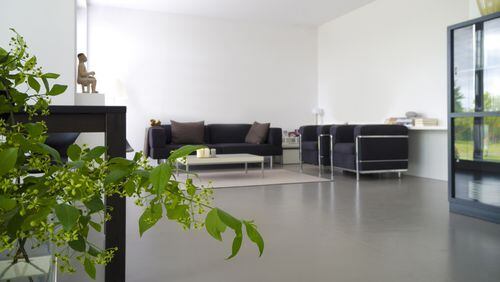It’s easy to get overexcited in perfectly merchandised decor stores: the shelves neatly packed with color-coded pillows, decorative boxes, pretty bookends and flickering candles that diffuse a scent not too dissimilar to heaven. As you wander around the supple leather sofas and perfectly styled vignettes, you start daydreaming about what your home could look like if you bought the entire store’s contents home — collections of vintage pottery, stacks of coffee tables books and all. Next thing you know, you’re at the counter casually laughing with the charming clerk as he swipes your credit card for hundreds of dollars.
Interior designers know better than to succumb to the irresistible appeal of our favorite decor stores — which is why it may not be such a bad idea to hire them. In the spirit of being economically savvy — we tapped four interior designers to share with us the items they would never splurge on. How much do you actually spend on towels, pillows and plants? Compare your cost-saving skills with the pros’.
INDOOR PLANTS
“Don’t bother splurging on indoor plants, because you may end up heartbroken,” says interior designer Katherine Carter. “I’m not saying don’t buy them, but don’t import olive trees from Italy unless you are royalty — chances are you will be disappointed. They may not thrive that well in an indoor setting. Essentially, most plants are meant for outdoors and when brought indoors can become quite high maintenance. Large indoor plants require a lot of TLC. A great option that won’t break your bank account and give you peace of mind when your beloved fig tree starts to wilt is to purchase from Home Depot. They will offer a return even if the plant is literally a stump. Just remember to keep your receipt.”
BATH TOWELS
“I buy all of my bath towels at Target,” admits interior designer Max Humphrey. “They’re like $15 each and super soft. I have a closet full of them and can afford to restock if I have guests staying for the weekend. I’m convinced they’re the same exact ‘Egyptian cotton’ towels that high-end bath companies sell for three times the price.”
DECORATIVE ACCESSORIES
“I used to go all-out finding little decorative objects that cost a fortune and ended up in the junk drawer,” says Humphrey. “Now I just buy houseplants if I need to fill a corner of a room the surface of a table. You can get a lot of bang for your buck, and they look great in any style home.”
L.A.-based interior designer Amy Elbaum agrees: “Whether you buy small accessories at HomeGoods or Target (both great options!), these pieces don’t need to be expensive to add that ‘lived-in’ feel. This is an area of design where it is important to just buy what catches your eye. That way you can easily move around small accessories to continue to give your space a fresh look.”
NURSERY BEDDING
“No need to splurge on your baby’s new nursery bedding, since they won’t stay a bambino forever,” says Carter, who knows that organic crib bedding is now available basically everywhere. “Purchase bedding from economical places like Land of Nod, Pottery Barn Kids, and don’t forget to check out Etsy! There are hundreds of baby bedding shops on Etsy that are one of a kind, which will also give your nursery a non-cookie-cutter look.”
GALLERY WALLS
“There’s a misconception that just because a piece of art costs a lot of money, it’s automatically better than an inexpensive piece,” says Humphrey. “For me, it’s all about buying stuff that is meaningful, regardless of the price tag. All of the artwork on the gallery wall at my last apartment was either found at thrift stores or cutouts from magazines, vintage book covers or old vinyl records I had framed. The assortment is what made it special, and I didn’t spend more than a $50 on a single piece.”
THROW PILLOWS
“Pillows are a great way to transform a space to follow the seasons or the trends,” says Chicago-based designer Donna Mondi. Interior designers love to change up their decor often, and pillows are an easy way to keep up with the seasons: “Treat throw pillows like you do your coats, shoes and scarves — seasonally,” says Elbaum. “Decorative pillows can be found at great prices and can easily be changed out to coordinate with the time of year — think faux fur and velvets in the winter and bright prints and light linens in the summer.”
BAR CARTS
“Why waste money on a bar cart when you can just use the top of a credenza in your living room or a shelf on a bookcase? Clear off some space, buy a cool tray, and arrange your booze (or fancy lemon soda) right on top,” says Humphrey. “It’s decorative, casual, and you can use the extra money to buy some vintage glassware.” For Mondi, this rule applies not only to bar carts but also to the accessories it contains: “To mimic the bar-cart look while keeping splurging to a minimum, mix in a few more affordable vintage items,” she says. “Antique markets are full of gorgeous cocktail sets at fantastic prices. You can also raid your grandmother’s china cabinet.”
———
Get the latest on home decor trends, design ideas, shopping guides and food news, and take a look inside your favorite celebrity homes on DomaineHome.com.
About the Author






